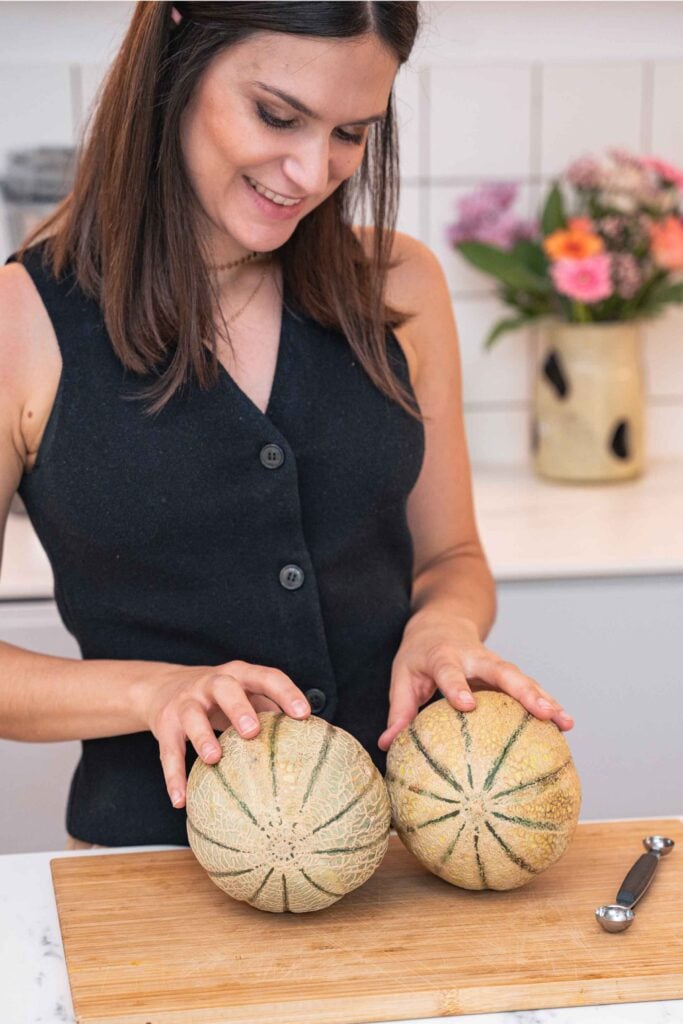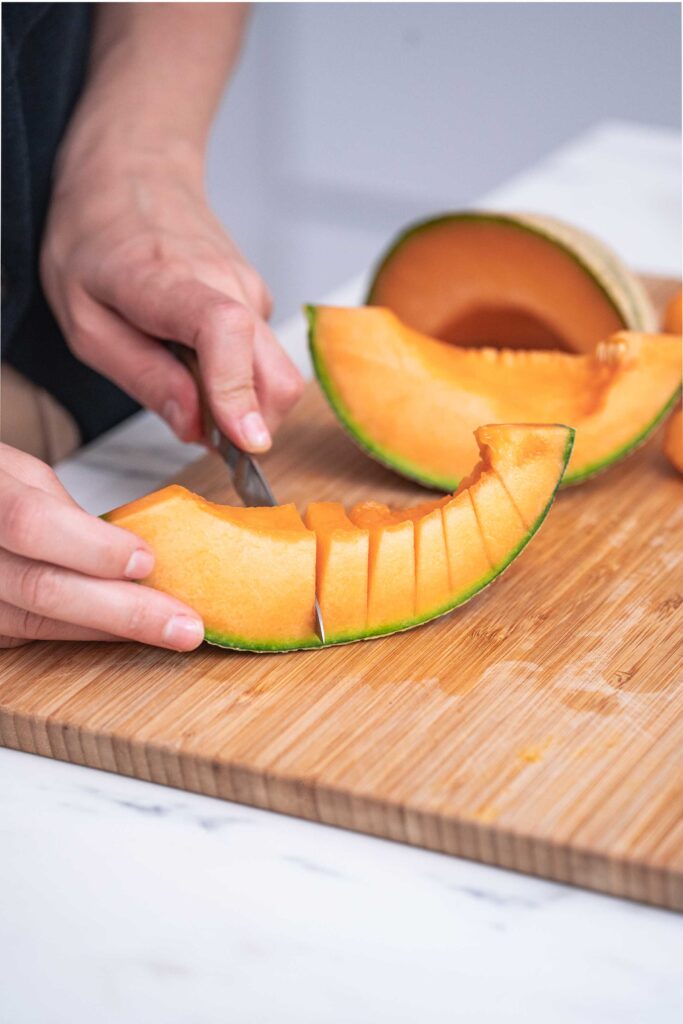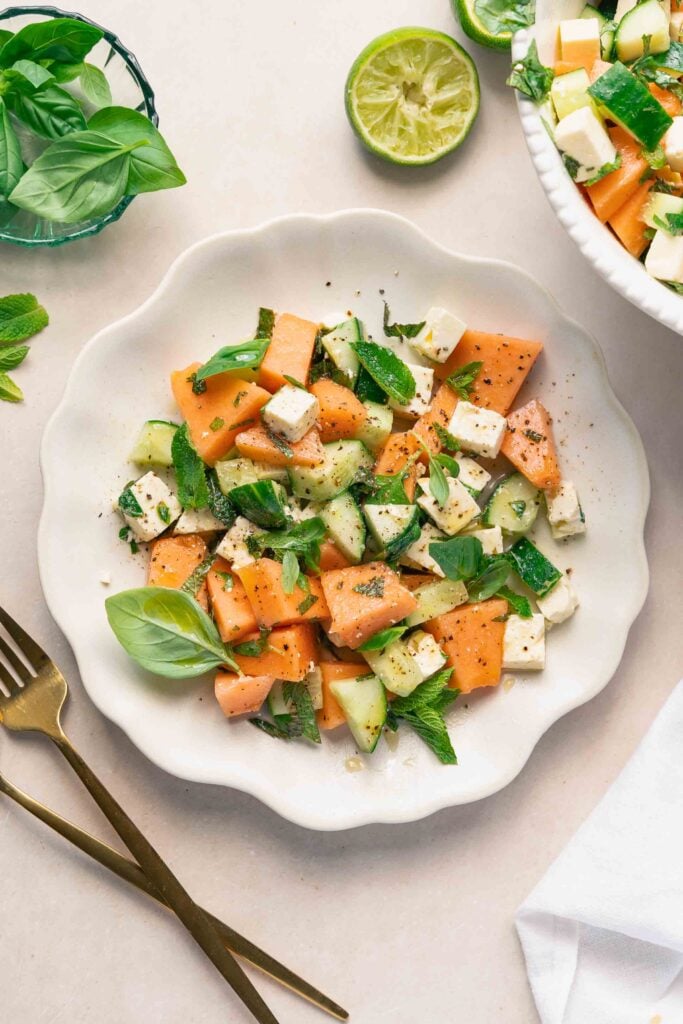How to select the perfect melon?
Melon is a summer staple! Served ripe, it has a sweet flavor, an incredibly fragrant taste and a texture that’s both firm and juicy.
However, it’s not always easy to select the perfect melon, especially the yellow melon or Cantaloupe melon. So here are a few tips on how to select and preserve a melon, as well as some recipe ideas.

How to recognize a ripe Cantaloupe melon?
As a French girl, I usually choose the French Cantaloupe melon which we call “Melon Charentais”. Native to the Charente region of France, the Charentais melon has a bright orange, soft, sweet flesh and an intense and fragrant taste.
To pick the perfect melon that will elevate your recipes, rely on your three senses: touch, smell, and sight!
- Weigh the melon to gauge its ripeness.
- Smell the melon
- Take a good look at its color
I’ll explain it all in more detail!
Choosing a melon by weight
Weight is a good indicator of a melon quality. A heavy melon for its size is generally a sign that the melon is juicy and therefore often rich in flavor.
Weigh the melon and compare it with other melons to estimate the amount of water it contains. A light melon is likely to be dry and not very tasty.

The smell of a ripe melon
For me, the most important criteria to choose a ripe melon. Bring the melon close to your nose at the stalk. If it smells sweet and fruity, typical of a melon, there’s a good chance it’s ripe.
If it smells too strong, it may already be overripe. If you have trouble smelling anything, let it ripen a few more days.
Check the skin of the melon
Finally, check the melon’s skin. It should be smooth, without blemishes or cracks. The skin lines (called sutures) should be clearly marked.
A melon with dull or damaged skin can be a sign of poor quality. Furthermore, the color of the skin should be uniformly yellow or beige, with no green areas, a sign of immaturity.

Tips for storing melons after purchase
Once purchased, store your melon at room temperature if it’s not yet ripe. This will allow it to continue ripening.
Once ripe, you can put it in the fridge to extend its shelf-life by a few days. However, I recommend you to eat it quickly to enjoy its freshness.
If you want to keep it longer, cut it into slices or cubes and place them in an airtight container in the fridge.

Recipe ideas using Canteloupe melon
The advantage of the Cantaloupe melon of the French version “Melon Charentais” melon is that it can be served in both savory and sweet recipes. Here are a few ideas for serving it:
- As an appetizer: A classic! Place a cube of melon, a piece of Parma ham or a basil leaf on a toothpick or on an appetizer pick.
- In a cold soup: For a light, original starter, make a melon gazpacho (cold soup) by mixing melon with fresh tomatoes, a little olive oil and balsamic vinegar.
- In salads: Add melon cubes to your salads or try this recipe for Cucumber and Melon Salad with Feta.
- For dessert: Add melon balls to your fruit salad, as in my Melon and Lime Ball Salad.

